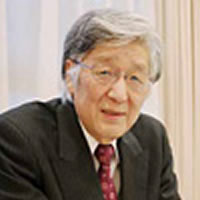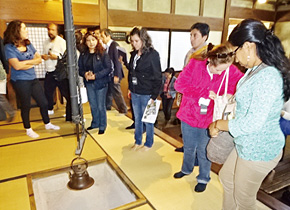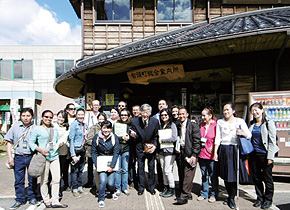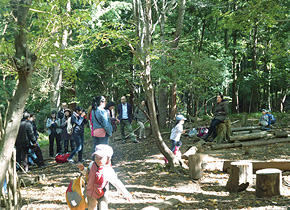The spirit of regional management linking local and urban areas Regions fostering Japan’s health and energy
The spirit of regional management linking local and urban areas Regions fostering Japan’s health and energy
 | Chizucho (in Tottori Prefecture) Population: 7,110 (as of May 1, 2015) 93% of the town’s land is mountain and forest |
Activities for the vitalization of Chizucho were launched in 1985 by residents’ groups, rather than through administrative guidance. The person who gave a boost to the groups was the current mayor. The participants visited Chizucho in Tottori Prefecture for this seminar, and Mayor Teratani kindly introduced case studies of successful town planning. The head of PREX’s International Department, Hojo, and Nishimoto, in charge of its public relations, interviewed the mayor to ask about one of his projects, “Town Planning that Everyone Can Be Proud of.”
PREX’s Hojo:…
Chizucho has been a strategic location since the Nara Period, and it prospered as Tottori’s largest post-station town during the Edo Period. The Ishitani Residence conveys this prosperity today. Part of the building is now open to the public, after Mayor Teratani petitioned to have it donated as a pillar of regional development. Today, the Ishitani Residence is a source of pride for people in the region. The Mayor is also promoting town planning, which is conducted as an activity residents have a stake in, after skillfully utilizing such regional vitalization tools as the Four Sides Council and Hundred Persons Committee. Some young people and others have returned to Chizucho from large cities. Under the arrangement, residents living here come up with their own ideas and transmit them so they can be realized, and they create leaders from among themselves. I feel this is why the region is evolving while the forests that have been inherited are being nurtured.
Mayor Teratani…
“The Forest Kindergarten” has resonated around the world.
If the government says it couldn’t be done because the government doesn’t have sufficient money, the people may be persuaded. In the end, the government does nothing. I launched the 100 Persons Committee after sending out the message that: “The town belongs to the people. I lack the wisdom. So, I want to borrow the wisdom from all of you.” It was eight years ago. The committee decides on the themes of agriculture, forestry and social welfare. Members debate for a year and then release their proposals on what can be good for Chizucho. My job is to draw up the budget after judging which things from outside will be useful. Furthermore, the responsibility for the outcome of these efforts is all my own. I believe that is the work of a town mayor. For instance, the Forest Kindergarten was realized from a proposal tossed around by the 100 Persons Committee. The Forest Kindergarten is where you take children to the mountains, where they can do nothing but play freely. There were various opposing opinions at first, such as, “The Education Ministry will never approve a kindergarten with no buildings.” The town already has official kindergartens.” But the proponents said they wanted to have kids raised in a kindergarten with a forest, and we heard the view that, “Chizucho is the kind of place where we can do child-rearing that utilizes the forest, and it should be the future direction of our education.” And so we created the kindergarten. A TV station once covered it, spending two years shooting the Forest Kindergarten and producing a one-hour program. The report was aired six times in 160 countries. The response was huge. Chizucho’s town hall received inquiries from around the world. Even today, the stream of people from throughout Japan visiting on inspection tours is never-ending. There are even families that re-locate here so they can have their kids enter the kindergarten.
Bringing in the air from outside and seizing upon new ideas
It would be impossible for leaders to know everything happening at a worksite. They need to make others at the sites judge what things are needed. And they take responsibility just at the critical moments. That is what the work of leaders is all about. Later, they briskly open the windows to let in the air from outside. When that happens, new ideas are seized upon, budgets made and plans executed. Organizations with non-leaders always just run around the same spot, like a mouse on a wheel. Nothing changes and nothing can be done. I guess there are lots of organizations like that.
Children make a town!
Students at Chizu Agricultural and Forestry High School get off at Chizu Station and pass in front of the town hall. At any rate, when I first became town mayor, the kids weren’t very lively. I visited the school, and when I said, “I want these students to work on something that they want to do, that will leave an impression, and it doesn’t matter what,” the then principal responded: “The students at this school wouldn’t be able to do their studies.” The students were made to learn from textbooks for fourth-grade elementary school pupils. Was this the kind of education we had? Castles are amazingly strong because of their stone walls. The walls consist of stones that are square, rectangular and various shapes, and so they don’t quiver when earthquakes happen. Stone walls made of square, rectangular and variously shaped stones are needed so that the country of Japan won’t shake. Making walls of stones of the same shape is not education. The subsequent principal said he wanted to create the 100 Persons Committee, comprising second-year students of the Chizu Agricultural and Forestry High School. Second-year students would study the town for a year and come up with their own proposals along the lines of, “I want Chizu to do it like this,” or, “I want to do this kind of thing.” We are able to see the proposals from the enrolled students taking shape. My idea was that the children would experience creating Chizu from their own ideas. Believing this to be a fantastic idea, we created the 100 Persons Committee. The students at the Chizu Agricultural and Forestry High School have grown this year to extent of winning first prize in Kanko Koshien.* Each prefecture and region has its own individuality. Education should bring out each region’s individuality. Foreigners also come here, and they teach English in the forests of Chizucho while playing the Tarzan game. That is the kind of thing I want to do. The theme this year of the 100 Persons Committee is “Children Will Save Chizucho!” We aim to be, “Chizucho, the town that gets directly involved,” as junior high and high school students and local residents think about Chizu.
*Kanko Koshien is a sightseeing plan, in which high school students throughout Japan vitalize the charm of their regions, and a contest selects the top contenders in Japan. In fiscal 2013, Chizu Prefectural Agricultural and Forestry High School, the first to take part from Tottori Prefecture, was selected from among 75 schools and 136 plans, performing brilliantly in the spectacular Gran Prix (winning the Minister of Education, Culture, Sports, Science and Technology Prize).
PREX’s Hojo:…
Thank you very much, Mr. Mayor. The seminar participants from Colombia had empathy toward the efforts related to Japan’s regional creation and seem to have gotten a true sense of the Japanese spirit. For next year’s seminar, we are thinking about having participants meet town residents and experience Chizu’s nature and regional development, and incorporating a program in which they would stay temporarily in private homes. In that way, Japan and Colombia mutually learn more about their shared issues. We will appreciate your continued efforts.
- Mr. Seiichiro Teratani
- 2016-07-06



